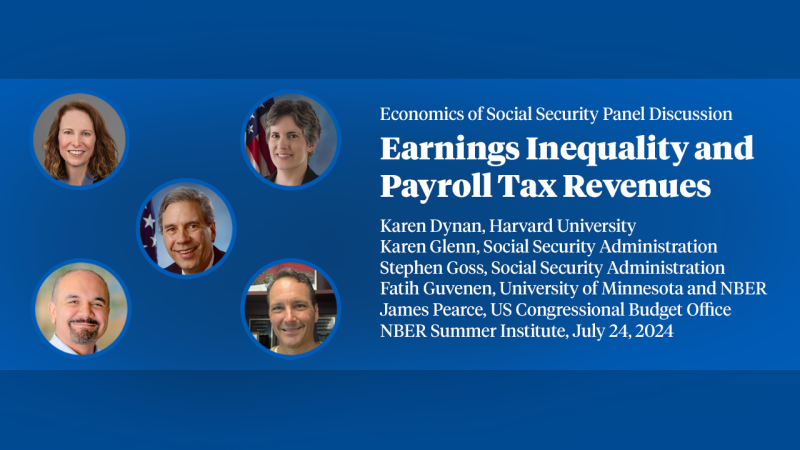Computers and the Internet
The "commercialization of the Internet" is shorthand for three nearly simultaneous events: the removal of restrictions by the National Science Foundation (NSF) over use of the Internet for commercial purposes; the browser wars initiated by the founding of Netscape; and the rapid entry of tens of thousands of firms into commercial ventures using technologies that employ the suite of TCP/IP (Transmission Control Protocol/Internet Protocol) standards. These events were the culmination of years of work at NSF to transfer the Internet into commercial hands from its exclusive use for research activity in government-funded laboratories and universities.
Now, sufficient time has passed to begin to evaluate how the market performed after commercialization. In fact, actual events have surpassed the forecasts of the most optimistic managers at NSF. Was this because of mere good fortune or something systematic with lessons for the market today? Other government-managed technologies typically face vexing technical and commercial challenges that prevent them from diffusing quickly, if at all. Can we draw lessons from this episode for the commercialization of other government-managed technologies, or even for the commercialization of other Internet activities?
As a window on these questions, I have examined the Internet access market and one set of actors: Internet Service Providers (ISPs). ISPs provide Internet access for most of the households and business users in the country, usually for a fee or, more recently, in exchange for advertising. Depending on the user facilities -- whether a business or personal residence -- access can involve dial-up to a local or a toll-free number at different speeds, or direct access to the user's server via one of several high-speed access technologies. The largest ISP in the United States today is America Online, to which approximately half the households in the United States subscribe. There also are many national ISPs with recognizable names, such as AT&T Worldnet, MCI WorldCom/UUNet, Mindspring/Earthlink, and PSINet, as well as thousands of smaller regional ISPs that provide service to businesses and households.
The Internet access market has several features that make it an interesting case to examine. Facilities for similar activity existed prior to commercialization, but there was reason to expect problems during migration into commercial use. The Internet appeared to possess idiosyncratic technical features and uneconomic operational procedures that made it unsuitable in other settings. Exclusive use of the Internet by academics and researchers fostered cautious predictions that unanticipated problems would abound and that commercial demand might not materialize. However, in sharp contrast to cautious expectations, the ISP market displayed three extraordinary features.
First, this market grew rapidly, attracting thousands of entrants and many users, and quickly achieved mass-market status. Second, firms offering ISP service became nearly geographically pervasive, a pattern of diffusion rarely found in new infrastructure markets. Third, firms did not settle on a standard menu of services to offer, indicative of new commercial opportunities and a lack of consensus about the optimal business model for this opportunity. These patterns underlay a number of puzzles and questions.
Concern over the potential need to redefine universal service to account for Internet-related services and other combinations of communication and computing, for example, have motivated me and others to study the geographic spread of commercial ISPs. In two papers, Thomas Downes and I (1) characterize the location of over 40,000 access points of presence -- local phone numbers offered by commercial ISPs -- in 1997 and 1998. In these studies, we establish that the U.S. commercial ISP market is comprised of thousands of small, geographically dispersed local markets for Internet access. There is no single structure that characterizes the ISP market across the country. Nor should we expect this heterogeneity to disappear.
Further, over 90 percent of the U.S. population has access to a competitive local ISP market. Approximately 5 percent of the U.S. population lives in areas with no access to any providers, and approximately 5 percent lives on the margin between easy access and no access. These percentages reflect increased access over time.
Third, whether significant differences exist between the experiences of Internet users in urban and rural settings depends on the extent to which national and local firms provide similar services. National firms primarily serve urban areas and compete with regional and local firms. Local and regional firms primarily serve rural areas and less densely populated areas.
To understand the diffusion of Internet technology, it is important to analyze how the technology is commercialized. The Internet is not a single invention, diffusing across time and space without changing form. Instead, it is a suite of communication technologies, protocols, and standards for networking between computers. This suite is not valuable by itself. It obtains economic value in combination with complementary invention, investment, and equipment. How do vendors construct viable and ongoing economic entities in an evolving and technically intensive marketplace such as this?
Explaining the variety of approaches that firms take to developing new services in technology-intensive markets has long been a topic of discussion in the economics of technology, industrial organization, and economic growth. In this vein, two of my papers (2) deal with the service offerings of ISPs. I present data on the services of ISPs in the summer of 1998, by which time the Internet access industry had undergone its first wave of entry and many ISPs had begun to offer services other than basic access. These papers develop and apply a code that classifies these services and establish that there is significant heterogeneity across ISPs in the propensity to offer services, including networking, hosting, and web design. Indeed, an unconditional urban/rural difference exists in ISP service.
Most of the explained variance in ISP behavior arises from firm-specific factors, though. Firm-specific determinants -- including a firm's geographic scope, its investments, and its focus on nontechnical users -- are pivotal to the offering of nonbasic services. Location-specific determinants, such as urbanization and the presence of professionals, seem to be less important.
Furthermore, new services tend to cluster together at firms and to be available more frequently in high-density areas. This outcome is partly influenced by economics of scope between old and new services. More generally, the firm-specific factors that are associated with new services, such as firm size and a focus on satisfying market demand by unsophisticated users, are disproportionately found in ISPs located in urban areas.
Finally, I (3) address the question of why commercialization went so well. Aside from defying expectations about government-managed technologies, this market has three traits -- rapid growth, geographic pervasiveness, and the absence of settlement -- that do not inherently go together in most markets. The presence of restructuring also should have interfered with rapid growth and geographic expansion.
Nonetheless, commercialization did not give rise to many of the anticipated technical and operational challenges. For a variety of economic reasons, entrepreneurs quickly learned that the Internet access business was commercially feasible. ISPs began offering commercial service after making only incremental changes to familiar operating procedures borrowed from the academic setting. It was technically easy to collect revenue at what used to be the gateway functions of academic modem pools. Moreover, the academic model of Internet access migrated into commercial operation without any additional new equipment suppliers.
Furthermore, Internet access was malleable as a technology and as an economic unit. While commercialization did give rise to the restructuring of Internet access to suit commercial users, the restructuring did not stand in the way of diffusion, nor did it interfere with the initial growth of demand.
Privatizing Internet access also fostered customizing Internet access technology to a wide variety of locations, circumstances, and users. As it turned out, the predominant business model was feasible on a small scale, and thus at low levels of demand. This meant that the technology was commercially viable at low densities of population, whether it was part of a national branded service or a local geographically concentrated service. Thus, privatization transferred the operation of the technology to a new set of decisionmakers who had new ideas about what could be done with it. Since experimentation was not costly, the technology perhaps could be adapted in new uses, new locations, new market settings, new applications, and in conjunction with other lines of business. While many attempts at adapting it failed, a large number of them also succeeded. These successes went well beyond what anyone would have forecast by simply examining the limited uses for the technology by noncommercial users prior to 1992.
Finally, the NSF was lucky in a particular way. It enabled the commercialization of the Internet access industry at a propitious moment, the time of the growth of an enormous new technological opportunity: the World Wide Web. This invention of ISPs motivated further experimentation to take advantage of the new Web opportunity, which, as it turned out, thrived under market-oriented and decentralized decisionmaking.
Many open questions remain in this industry. What principles should economists use for measuring services in this industry? In the future, I would like to examine ISP pricing behavior and structural changes in their portfolio of services. Studies of these activities and changes should provide a window on how Internet technology has to be packaged to provide value to commercial users.
1. . T. Downes and S. Greenstein, "Do Commercial ISPs Provide Universal Access?," in Competition, Regulation, and Convergence: Current Trends in Telecommunications Policy Research, S. Gillett and I. Vogelsang, eds. Mahwah, NJ: Lawrence Erlbaum Associates, 1999, pp. 195-212; "Universal Access and Local Commercial Internet Markets," working paper, June 2000.
2. . S. Greenstein, "Commercialization of the Internet: The Interaction of Public Policy and Private Actions," in Innovation, Policy, and the Economy, A. Jaffe, J. Lerner, and S. Stern, eds. Cambridge, MA: MIT Press, 2000 (also found at www.nber.org/books/innovation6/index.html); and "Building and Delivering the Virtual World: Commercializing Services for Internet Access," NBER Working Paper No. 7690, May 2000.
3. S. Greenstein, "Empirical Evidence on Commercial Internet Access Providers' Propensity to Offer New Services," in Select Papers from the 26th Annual Telecommunications Policy Research Conference, B. Compaign and I. Vogelsang, eds. Cambridge, MA: MIT Press, 2000.


